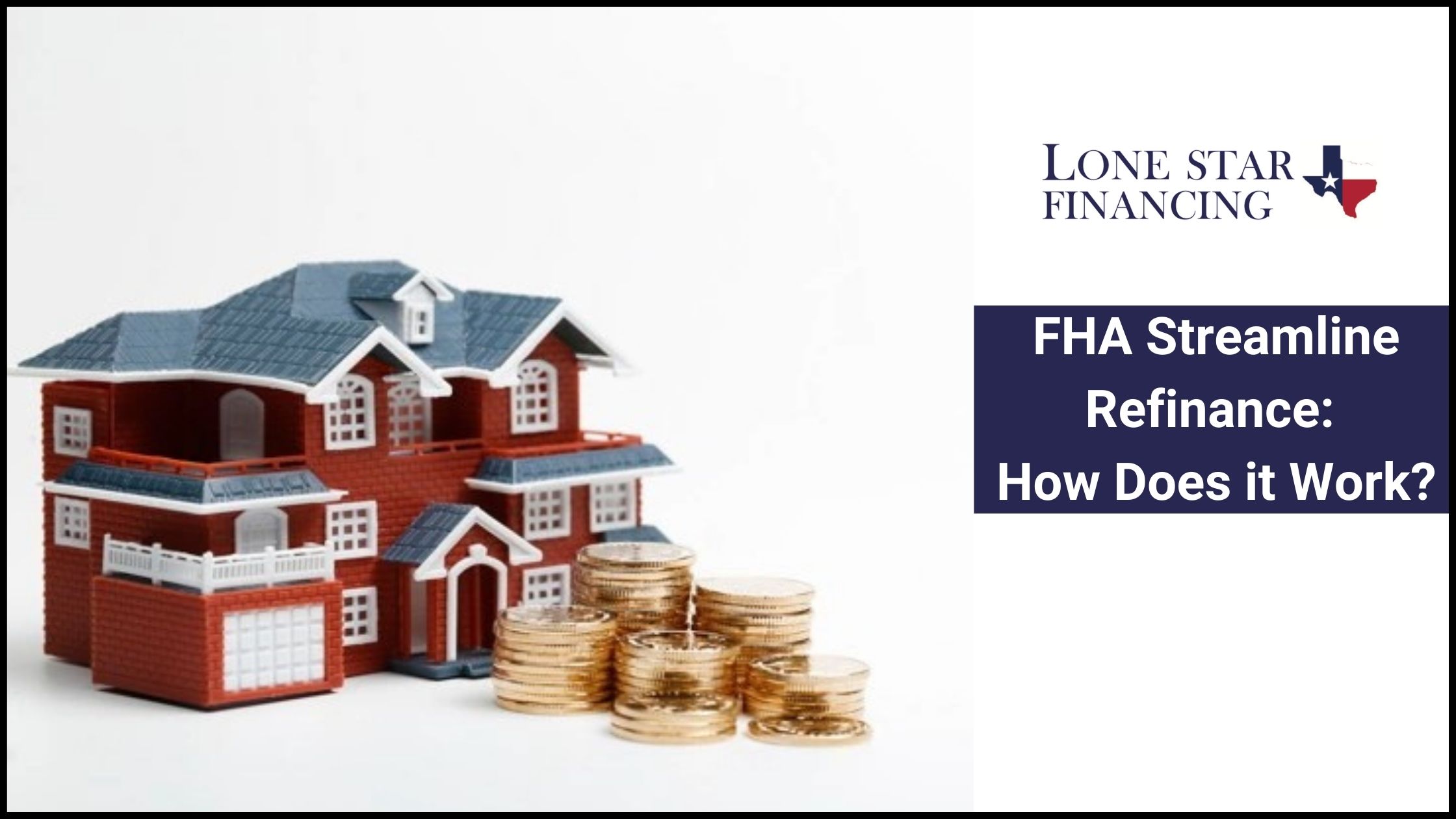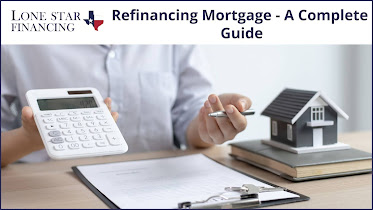FHA Streamline Refinance: How Does it Work?
Texas FHA loans are a
prevalent choice for first-time buyers. It offers low down payments and credit
score needs that are less strict than conventional.
An FHA streamline refinance may be a
good option that gives some advantages of low-interest rates or pays off your
mortgage quickly. In addition, it allows you to replace your current mortgage
with the FHA loan in Texas without going through all the
traditional refinance. So here we need to know about how an FHA streamline
refinancing works.
How does an FHA streamline refinance work?
An FHA streamline refinances for those
who already have an FHA mortgage the chance to reduce the monthly payments. Or
also get a better interest rate without the paperwork. In addition, you won't
need to have your home appraised to qualify for the refinance, saving time and
money.
In addition to meeting standard FHA loans need,
● Currently
have an FHA mortgage
● Have had
your mortgage for minimum six months
● Be up to
date on your mortgage payments for the last 12 months, or at least six months
if you have not had the mortgage for an entire year.
● Get benefit
from the refinance
● Not take
more than $500 cash during the refinance
The credit qualifying vs. non-credit qualifying refinances
FHA streamline refinances two main
types: credit qualifying and non-credit qualifying.
Non-credit qualifying refinances the
simple of the two and does not need a credit check. You can also use the
non-credit qualifying option if all of the borrowers on your mortgage remain
the same.
The main difference in credit qualifying
is that your lender will need to pull your credit report. You might need to
provide documentation of your income so your lender can calculate your DTI
ratio and determine if you can afford the mortgage. So, you will likely have to
go this route if you are removing a person from the mortgage while the
refinance
Who qualifies for an FHA streamline refinance?
FHA must ensure your current home loan
qualifies for an FHA streamline refinance. If you are not sure about that, then
ask lenders in Texas. FHA also needs
three months of on-time payments and a 210-day waiting period since your home's
last closing date. Eventually, the FHA streamline refinance must have a
purpose. And the refinance usually needs to lower your combined interest and
insurance rate by at least 0.50 percent.
The benefits of FHA streamline
Your lender must show that you will get
a net tangible benefit from the refinance. So, there is some assurance that an
FHA streamline refinance will help in some way to those who qualify.
The benefit could be reduced interest
rate, moving from an adjustable-rate mortgage to a fixed-rate mortgage, or
getting a shorter loan which allows you to pay less in interest over the life
of the loan.
For instance, if you move from a
fixed-rate loan to a new fixed-rate mortgage, your new loan has an interest
rate at least 0.5% points lower than your existing FHA loan.
FHA streamline refinance to get a low-interest rate; you generally have a lower monthly payment. Plus, if you refinance from an adjustable-rate mortgage to a fixed-rate loan, you will gain the stability of a monthly fee set for the remainder of the loan. The process of an FHA streamline refinance compared with the other refinance loans is easy.
Closing costs of an FHA streamline refinance
Generally, you have to pay closing costs
with an FHA Streamline Refinance. It includes a lender origination fee,
insurance costs, and the FHA mortgage insurance premium.
The exception is that your lender agrees
to charge you a higher interest rate to cover your closing costs.
Unfortunately, the FHA doesn't allow lenders to roll a homeowners' closing
costs into a new mortgage loan.
Conclusion
Find the best local mortgage lenders who help
you complete the whole process of FHA streamline refinances. This experienced
and expert industry Lone Star Financing always stands with you and provides the
best loan per your goal.



I recently bought the Sony HT-S40R Bluetooth home theater speaker system, and it’s been awesome. Setup was a breeze, and it really fills the room. Perfect for movie nights, and no lag with Bluetooth!
ReplyDelete